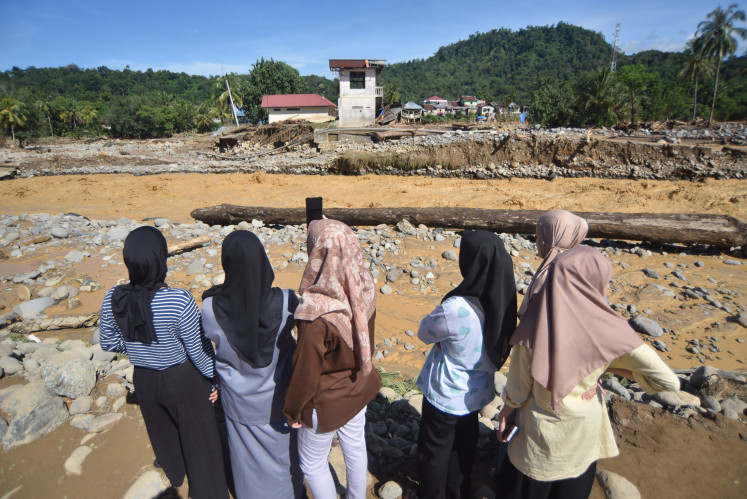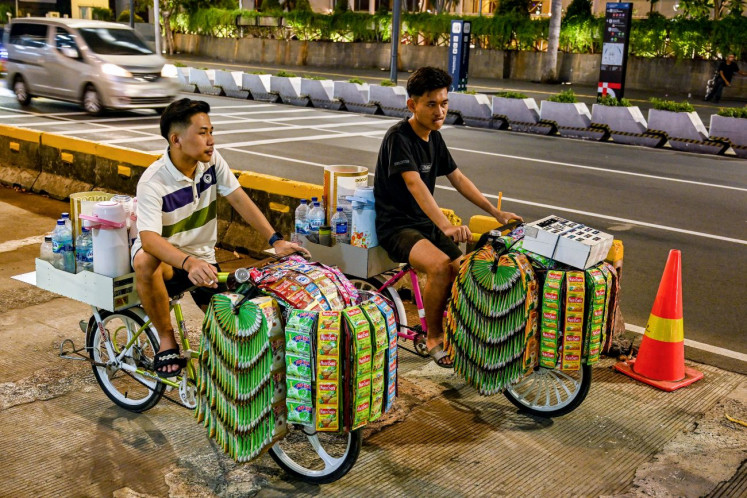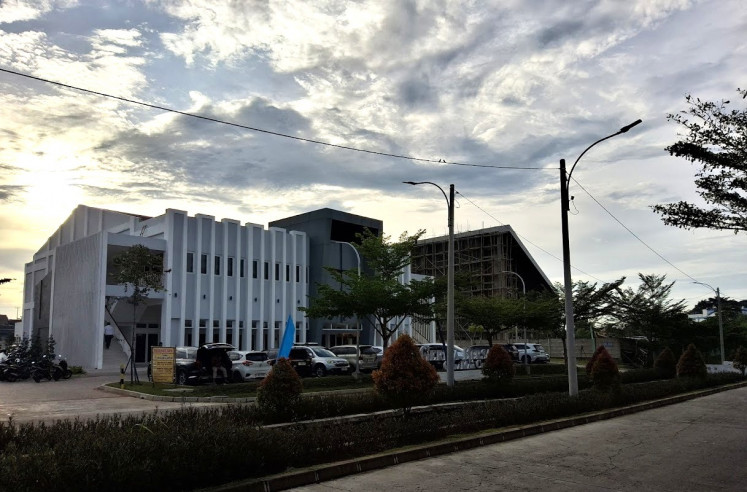Popular Reads
Top Results
Can't find what you're looking for?
View all search resultsPopular Reads
Top Results
Can't find what you're looking for?
View all search resultsThe rise of political digital attacks
Cyberattacks on government critics have at least doubled in October compared with the previous six months. SAFEnet observed 49 attacks from April until September 2020. That means, 8 attacks occurred per month on average. The most common form of attack was hacking (76 percent), followed by impersonation (5 percent), doxing (5 percent), attempts to log in (5 percent) and others. The attackers targeted almost all popular platforms, namely WhatsApp, Instagram, Twitter and Facebook
Change text size
Gift Premium Articles
to Anyone
T
he massive demonstrations against the Job Creation Law were also felt in the digital world. The protests from civil society against the omnibus law, manifested in the hashtags #TolakOmnibusLaw (reject the omnibus law) and #TolakUUCiptaKerja (reject the Job Creation Law), have become a trending topic in global cyberspace. At the same time, however, digital attacks on protesting activists and students have been on the rise.
Based on monitoring by the Southeast Asia Freedom of Expression Network (SAFEnet), at least 16 cases of digital attacks targeting activists, workers and students have occurred as of Oct. 20 in the form of hacked Instagram accounts, takeovers of WhatsApp numbers, attempts to log in to Twitter accounts, hacked or defaced websites as well as doxing and other threats through WhatsApp and Instagram.
Cyber attackers have targeted labor activist Mirah Sumirat, the president of the Indonesian Workers Union (ASPEK). She lost control of her phone number and WhatsApp the day before the big stunts on Oct. 8. She announced the incident through her Twitter account. Other attacks happened to students using the same method: Takeovers of WhatsApp numbers.
Cyberattacks on government critics have at least doubled in October compared with the previous six months. SAFEnet observed 49 attacks from April until September 2020. That means, 8 attacks occurred per month on average. The most common form of attack was hacking (76 percent), followed by impersonation (5 percent), doxing (5 percent), attempts to log in (5 percent) and others. The attackers targeted almost all popular platforms, namely WhatsApp, Instagram, Twitter and Facebook.
The upward trend of digital attacks shows that day-by-day information technology is increasingly intertwined with political matters. Information technology on the one hand is a tool to encourage social political change, mainly by civil society, but on the other hand it has become a medium to repress activism by alleged state-sponsored actors.
This can be seen from several indicators. First, the timing of the attacks is always closely related to political issues. Digital attacks tend to increase when there are controversial political debates, especially at the national level. Other than the controversy over the Job Creation Law this October, cyberattacks also increased in June as well as in August and September. In June we detected 11 digital attacks, as against 9 in August and 10 in September.
What were the hot issues in those months? In June, the Black Lives Matter (BLM) movement in the Unites States was intensifying in response to police violence against Afro-American citizen George Floyd. This racial discrimination created solidarity both online and offline in various parts of the world, including Indonesia. Nationally, the death of Floyd gave rise to a campaign against racial discrimination in Papua, expressed through the hashtag #PapuanLivesMatter.


















